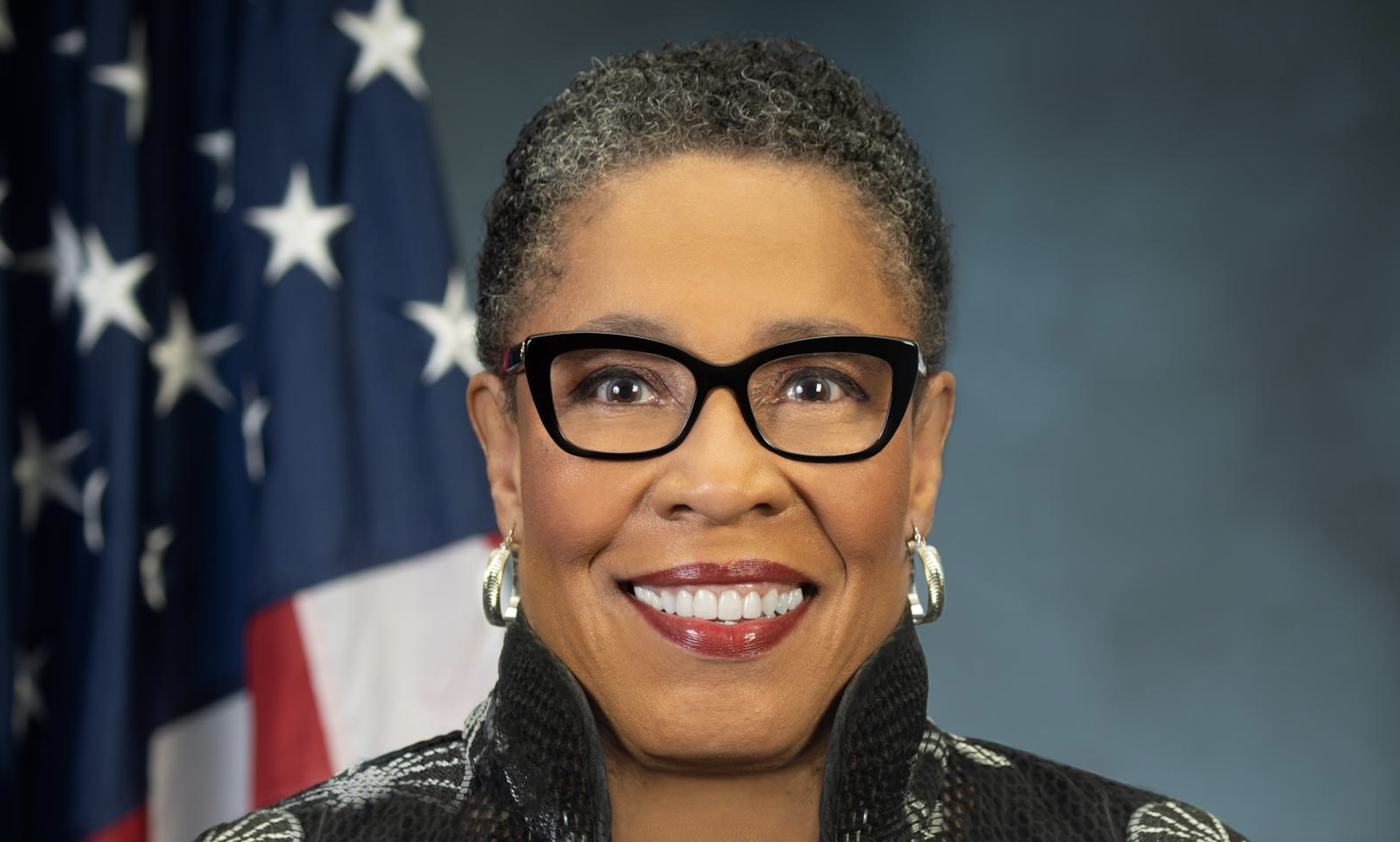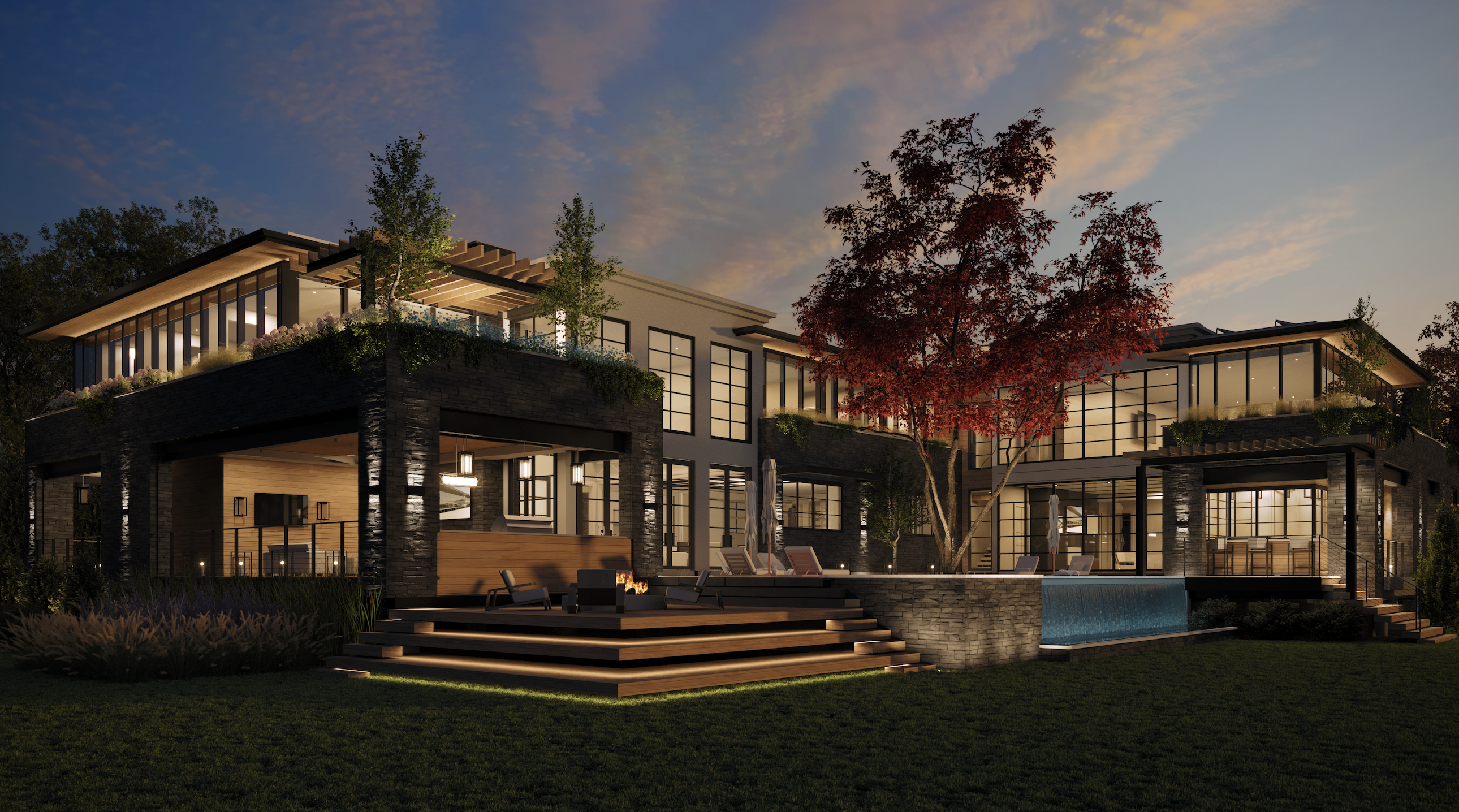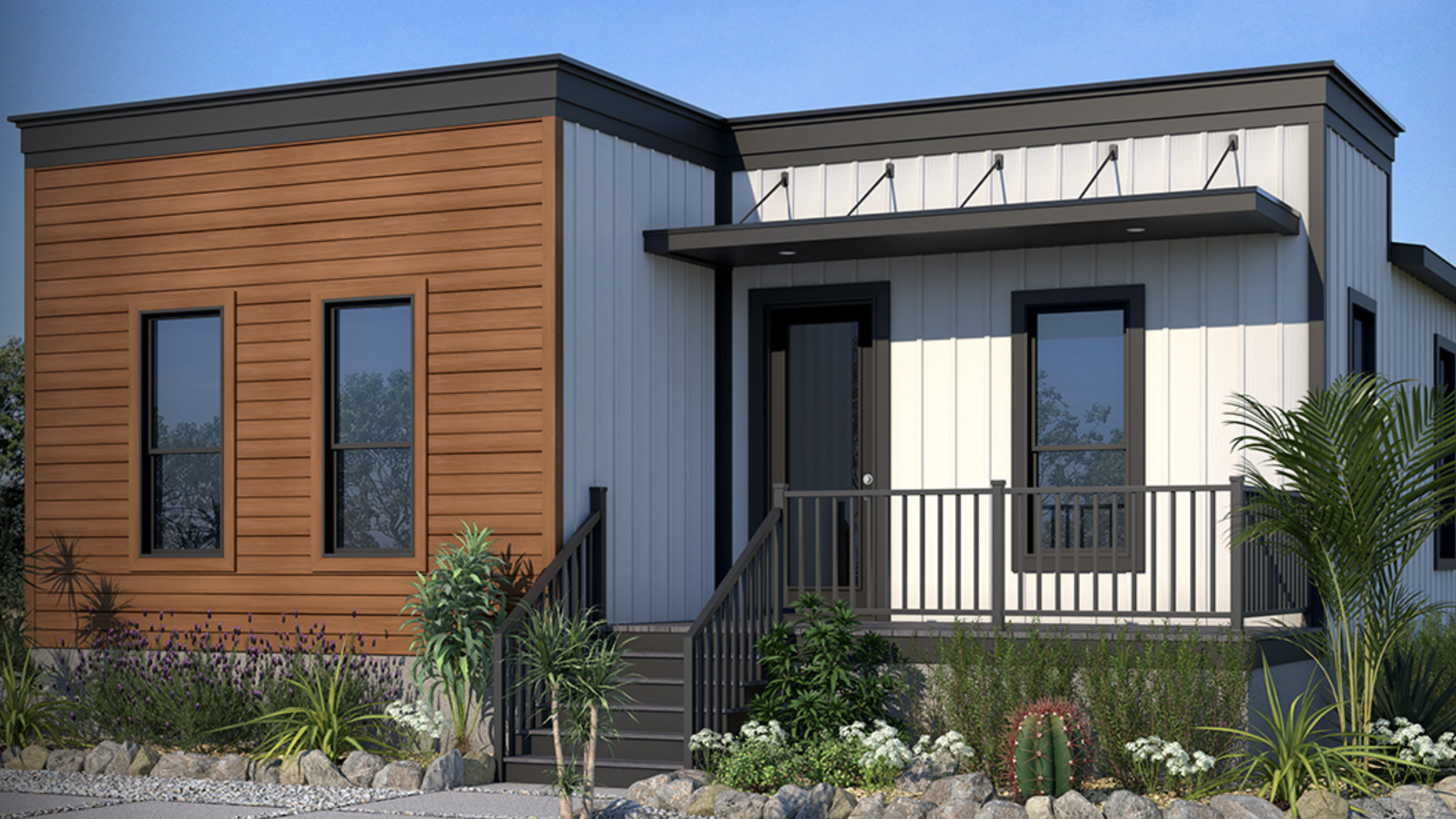|
John Wieland Homes and Neighborhoods offers a program called "Generous Builder" in order to provide customers more choices, yet keep the selection process under control.
|
|||
|
|
Public GIANTS such as Hovnanian Enterprises and KB Home are expanding their commitment to retailing options and upgrades through design centers. But the most interesting innovations in this emerging area of builder operations may be on the private side of bigness. As more of these retail breakthroughs prove their worth, we look for builder design centers to grow larger and their locations to become increasingly more visible from the freeway.
Regional GIANTS David Weekley Homes, operating in seven states, and John Wieland Homes and Neighborhoods, operating in four states, are two of the leaders introducing twists to builder retailing that even the public GIANTS have yet to try. And local Indianapolis builder C.P. Morgan turns the whole idea of a design center upside down by suggesting these operations should not be profit centers and that the margins on options and upgrades should never exceed what the builder makes on the home itself.
Customers Drive Change
Whatever model big builders follow into the future, it's clear that design centers are here to stay, relegating the selections center in a model-home bedroom or garage to the scrap heap of history. Customers are driving this change. They demand the opportunity to customize even production-built homes, and large design centers offer the chance to see and touch many more products than under the old model home selections approach.
The fact is, virtually all builders with design centers report customer satisfaction scores rise with option and upgrade sales.
Vertical Pioneer
Pulte, Toll and other public GIANTS are investigating vertical integration as a way to cut costs, but Atlanta move-up maven John Wieland has always run his company with a high degree of verticality. John Wieland Homes and Neighborhoods ranks No. 35 in PB's GIANT 400, with $606.2 million in 2003 revenue from 1,608 closings. The firm now builds in Charlotte and Raleigh, N.C.; Nashville, Tenn.; and Charleston, S.C., as well as Atlanta.
|
Atlanta builder John Wieland sells lighting fixtures, cabinets and entry doors from his own affiliated companies among the options offered in his design center.
|
"We've got design centers in all five cities," Wieland says. "We sold $9 million in options last year in Atlanta alone. This latest generation (a 10,000-square-foot building in Atlanta and a 15,000-square-foot facility under construction in Charlotte, N.C.) is just an upgraded version of something we've had for 20 years."
When Wieland presents cabinet options and lighting fixtures to buyers, they are the products of his own affiliate companies. "We've always manufactured our own cabinet lines," he says. "We don't make lighting fixtures, but we work with importers and stock them. And we're now making our own entry doors, with leaded glass inserts we get from China. We're also doing some audio and video equipment installations.
Wieland lists customer satisfaction as the only important metric for his design consultants. He has seven working with buyers in Atlanta. They are paid a salary and a bonus but not commission.
"The standard products in our houses are, on average, high," he says. "We don't want any buyer made to feel bad, even if they never spend another dime on upgrades. I don't want our people pushing stuff.
"But we are not like [C.P.] Morgan," he continues. "Everything in our design centers carries higher margins than our houses because it's all more management-intensive."
Electronic Holy Grail
Wieland has not followed Weekley's lead on high-visibility locations. "That's a colossal investment," he says. However, he has linked the design center into the production process electronically, the Holy Grail all design centers now are working toward.
"We have a wireless network in the design center," he says. "Designers take a wireless laptop with them. When the designer calls up a house, there's a drop-down menu for everything that needs selection. Depending on the stage of construction, the designer is locked out of every selection beyond the point that would jeopardize construction."
Once selections are complete, vendors and Wieland's builder (superintendents) are instantaneously notified. All data is entered with the customer, who then signs a printout.
On a typical, pre-sold single-family house, the designers spend two three-hour appointments with buyers to get through the bulk of option selections, then another two-hour session just to select lighting. Debbie Naftel, who manages the Atlanta showroom, says as large as that time commitment looks, it was much longer before the design center compressed the process. "We present a lot of options. Imagine what it would take to drive around to all the suppliers and look at all those products!"
Wieland's buyers make all their exterior selections before framing is complete and all kitchen choices by rough-mechanical stage. "We phase the three appointments to align with construction," Naftel says.
Strongest Sellers
Naftel says Wieland's most profitable sales are in kitchen products, especially cabinetry. "There's also a strong trend toward built-ins and cabinetry options in other rooms, such as home offices," she says. "Those are all high-margin items. We've just started doing home theaters in the last several months."
Wieland's showrooms are in a constant state of change. "I think we'll have to expand our facility in Atlanta," Naftel says. "We're continually adding options, and the manufacturers keep expanding choices in existing product lines. Last year, our option sales increased 34 percent."
|
C.P. Morgan's New Home Showroom, located in a mixed-use office park just outside Indianapolis' 465 outer-belt freeway, is utilitarian, not flashy. "We're not retailers," says Kelly Nicholl, showroom director. "We don't impose our ideas of perceived value on our customers."
|
Future Is Now
Online selections are next. "That will be here soon," Naftel says. "Our buyers are at least 80 percent move-ups, and many of them are corporate relos. Our average sale price is close to $400,000. Moving some selections online would help our out-of-town customers."
John Wieland says there's no alternative to more choices.
"The potential for design centers depends on your threshold for pain. The more you offer, the better systems you need because you get more chances to screw up."
Another Approach
Indianapolis value leader C.P. Morgan Co. touts a simple theme: 'More square feet, less money.' It's led the firm to market domination of Indianapolis and the No. 64 rank in PB's GIANT 400. Morgan closed 2,414 detached homes in 2003 for $326 million in revenue.
That tagline is an echo of the famous Rayco model pioneered in San Antonio a generation ago by Jack Robinson, then a Rayco vice president and now a management consultant to Chuck Morgan of C.P. Morgan. Rayco invented the design center to move buyers efficiently through the selection process. As Robinson sees it - and Morgan buys the vision - the goal is to sell more houses, not more options. That makes for a very different design center operating model.
No Commissions
New Home Showroom director Kelly Nicholl explains: "It's really supposed to be about the customers making choices that are best for them. If the showroom is a profit center and the design consultants are paid on commission, it's human nature to follow their own best interests, not those of the customers. The consultants are going to push high-margin products. Our reason for being here is to provide service and choice to our customers - period."
The C.P. Morgan approach is to train the design consultants to interpret what their customers are trying to accomplish. "They are paid no differently if people put $200 into a home or $20,000," says Nicholl. "Consultants are salaried, and they serve the $85,000 entry-level buyer in the same manner as our buyer at $250,000."
Morgan's displays of products are user-friendly, not intended to generate sales. "The profit center design studios look glitzy to me," Nicholl says. "That's not our approach. We are not retailers."
Fixed Margins
Perhaps the biggest difference of all: Morgan's design center pricing carries a standard markup that goes on everything from appliances to carpeting. "It's consistent with the margin we make on the house," Nicholl explains. "Our margin is the same on a stud or a piece of drywall or a countertop or a faucet. It's applied to everything."
The C.P. Morgan showroom is 12,000 square feet. A dozen design consultants and three change-order consultants work with buyers. "Right now, the change-order consultants meet with people who want to make changes," Nicholl says. "They do the drawings to move walls and add windows. But my goal is to have the customers eventually deal with just one person, a showroom consultant to guide them from structural changes right through to products and finishes."
The showroom is open seven days a week. If visitors are not already buyers, the staff helps them with information on the more than 30 communities Morgan has under development in the market. "We don't push people on any decision," Nicholl says. "Our goal is to educate and inform them so they can make a decision in their own best interests."
Related Stories
Custom Builder
HUD Secretary Marcia Fudge Announces Forthcoming Resignation
U.S. Department of Housing and Urban Development Secretary Marcia Fudge has said that she intends to leave office later this month
Custom Builder
Floodproof on a Floodplain
An impressive addition to the IDEA Home series, the NEWLOOK Experience Home is a master class in engineering and creative design, with builder Michael Freiburger out-thinking an exceptionally tricky lot
Custom Builder
Why Start a Custom Building Business?
In this Taking Care of Business segment, expert coach and trainer Scott Beebe joins our host Duane Johns to talk about where custom builders could be getting off on the wrong foot
Custom Builder
3 Questions Answered About Reliable Energy in Home Construction
Energy expert Bryan Cordill makes a case for why and how propane is an answer to growing concerns about reliability and resilience in home construction
Business
Custom Builder to Talk Color Design with Becki Owens at IBS
At this year's IBS, renowned designer Becki Owens will sit down with host James McClister, editor of Custom Builder, to discuss a variety of topics from basic color play in design to the Allura Spectrum palette, a collection of Sherwin-Williams colors curated for the benefit of pros
Business
PERC Highlights Sustainability and Efficiency at IBS with 'Clean Build Conversations'
Hear from industry standouts Matt Blashaw and Anthony Carrino at this hour-long Show Village event
Business
The Five Foundational Cornerstones
Business coach Scott Beebe shares insights into the often ignored business basics that could be the difference between long-term success and failure
Custom Builder
Start With the Why: Fundamentals of the Custom Builder Business
In our inaugural episode of Taking Care of Business, host and custom builder Duane Johns sits down with Scott Beebe, head coach and founder of My Business on Purpose, to talk vision, purpose, mission, values, and more
Business
Why AI Is Now Key to Our Trade Partner Strategy
Thompson Custom Homes Business Manager Erin Day explains how AI became a crucial part of building and maintaining successful trade partner relationships
Business
Thriving in 2024: Tips for Succeeding in an Uncertain Environment
Author and sales expert Mark Richardson shares his insights on the industry and how to rethink your approach to success in the new year












